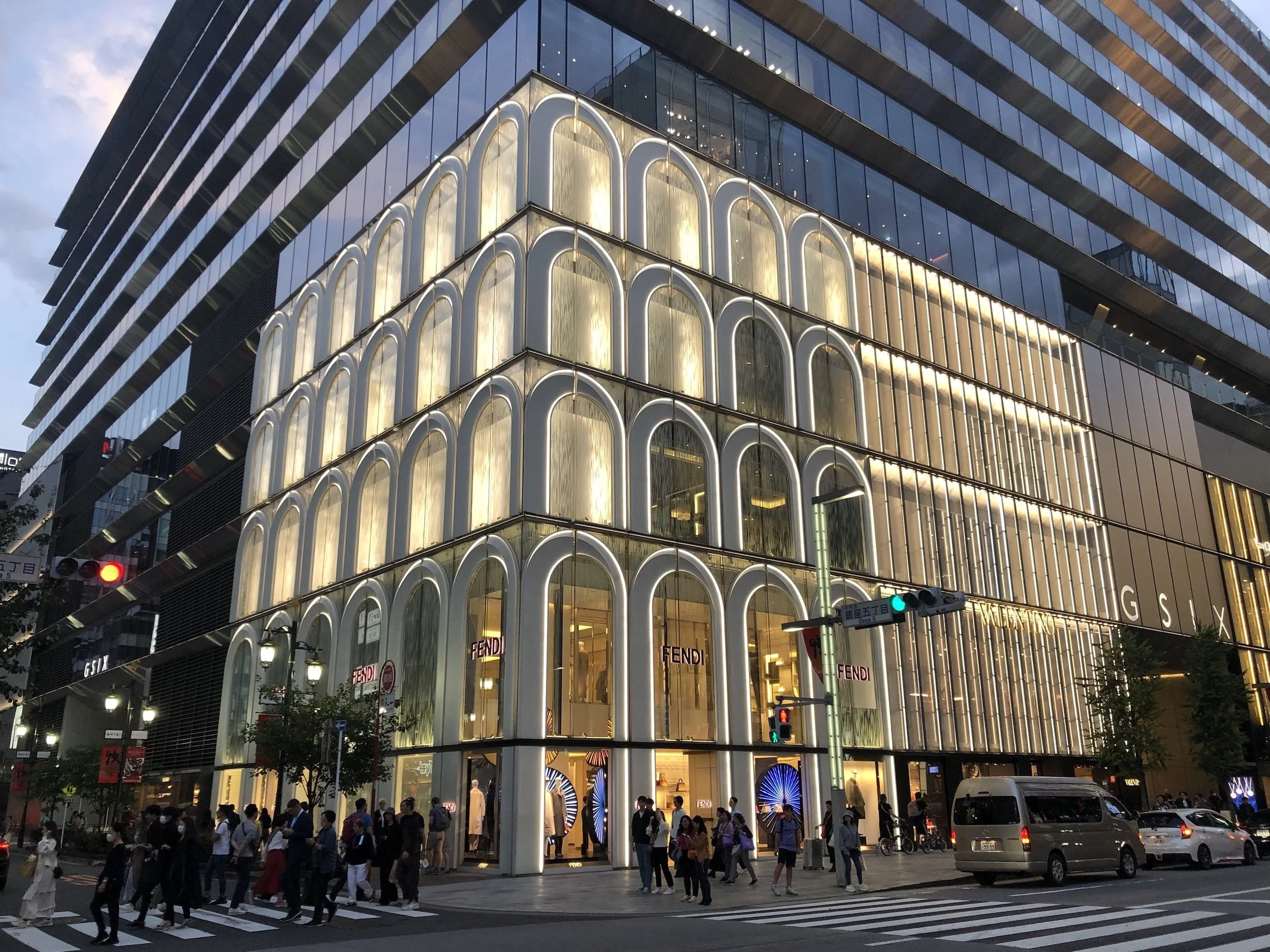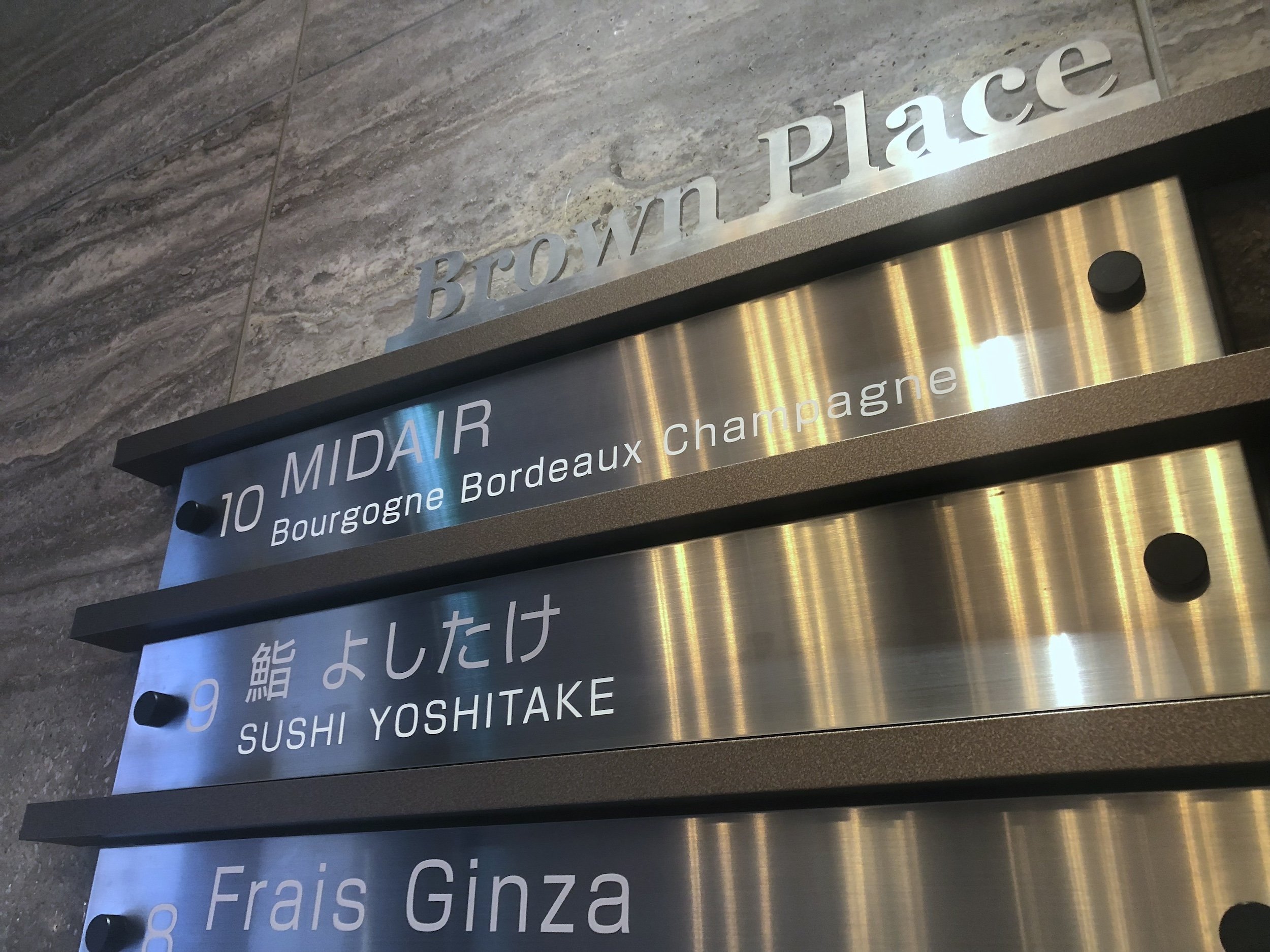Update: 12/18/2023. It seems I caught this restaurant at the raw, fish-tail end of its three-star run. In the 2024 Michelin Guide (which I’ve written about now for Explore), another Ginza joint named Harutaka has dethroned Sushi Yoshitake as the capital’s reigning three-star champ. Sushi Yoshitake still has two stars.
I first ate Tokyo’s only current three-star Michelin sushi out of a food truck. That may sound like a contradiction of culinary trappings, but in hindsight, marrying fine dining with street food was a good place to start my Michelin journey. It’s a journey I’ve accelerated of late, using the famous restaurant guide to seek out new dining experiences in Tokyo. And it’s a journey that peaked last night with a more formal, sit-down meal at Sushi Yoshitake in Ginza.
Other sushi restaurants have come and gone from the Michelin Guide since Sushi Yoshitake first entered it in 2012. Some have gained stars, others have lost stars. Still others have stopped accepting reservations from the general public. Sushi Yoshitake is not one of those. It’s maintained a steady three-star rating for over a decade, to the point where it’s now the only game in town when it comes specifically to Tokyo sushi restaurants that hold Michelin’s highest distinction.
It takes a special hand to ensure that kind of consistency. My first exposure to the Yoshitake name came in 2015 at the Tokyo International Film Festival. The festival had an event that year called “Tokyo Cinema Cuisine,” where they brought in five top Japanese chefs and had them each create a special menu, to be served out of a food truck in Roppongi Hills Arena. One of the chefs was Masahiro Yoshitake, the namesake of Sushi Yoshitake.
At the festival, Chef Yoshitake’s truck was serving mackerel-pressed sushi with whole-grain rice. It was ¥1,000 for two pieces. Dining at his real restaurant was significantly pricier. I only glanced at it discreetly, but I’m pretty sure the couple sitting next to me paid for their drinks with an American Express Black Card.
Sushi Yoshitake has also been known to entertain celebrities like James Gunn, the writer-director of the Guardians of the Galaxy movie trilogy and the upcoming Superman: Legacy film. Gunn headed up the jury at the Tokyo International Film Festival in 2014.
A Taste of the Ginza High Life
Ginza Six, one of the nearest major landmarks to Sushi Yoshitake.
Brown Place, 7-8-13 Ginza, Chuo-ku, Tokyo.
Sushi Yoshitake is on the 9th floor.
Sushi Yoshitake occupies the 9th floor of the Brown Place building, just one block over from Chuo Dori, the central shopping road where the fashionable Ginza Six complex is located. It can be a little hard to pinpoint its exact location among all the other buildings stacked with Japanese signs, so they ask guests to arrive 10 or 15 minutes early. The dress code is business casual, but when I stepped off the elevator, two other men in suits and ties and one woman in a not-so-casual kimono were already waiting outside.
It was a tight space and I was worried about etiquette, so I didn’t even snap a picture of the sign outside the restaurant door. Inside, there are no photos allowed, but it’s a beautiful space with a long wooden counter and even a wooden icebox. Chef Yoshitake’s wife is the head hostess, and she also wears a kimono. Throughout the meal, you’ll see the chef fanning the grill and rolling sushi rice by hand while his apprentices prepare the fish. As I watched them peel shrimp and lay it out symmetrically, it struck me that even the raw ingredients at this restaurant looked as pristine as they would in a professional photograph.
As for the food itself, I honestly feel like this is the kind of meal where you’d need to take notes to give a description that would do it any kind of justice. It’s a two-hour omakase course where the chef serves you 6 small appetizer plates, followed by 14 sushi pieces, one at a time. The first plate of chawanmushi (steamed egg custard) was deceptively simple; it sort of lulled me into a false sense of security with a familiar taste. Then, came the plot twist of the bonito, with its new and revelatory taste.
They gave me a paper foldout menu with an overview of each appetizer and sushi type in English, but the bonito had horseradish and other ingredients, and there were three different kinds of sashimi on one plate. (One of them was red snapper, if memory serves.) The botan shrimp was also topped with caviar, and as you can see from the scanned image below, the menu didn’t include details like that.
A Wonderful Yet Fleeting Culinary Pleasure
Chef Yoshitake did explain to the other guests in Japanese — and then, to me, in English — what went into each dish. Over the course of two hours, though, there were so many delectable dishes put in front of me that I soon lost track of ingredients and stopped trying to catalog them all. One highlight, after the steamed abalone, was when the chef gave us sushi rice to mix in with the leftover abalone liver sauce. It added a creamy texture to the rice, similar to the ikura and uni sushi, which came served with a spoon.
Other than that, they’re not strict at Sushi Yoshitake about whether you eat your nigiri with chopsticks or by hand. Since the latter is encouraged elsewhere, I went with that option, cleansing my palate and hands with pickled ginger and a finger towel between bites. This is Edomae sushi, made with red vinegar, and I can see why restaurants that serve it wouldn’t want guests to wear cologne or perfume. At Sushi Yoshitake, the smells from the grill and charcoal brazier were almost as much a part of the experience as the slow savoring of tastes.
If I could sum up the entire experience in one word, it would be: ephemeral. Watching Chef Yoshitake work and achieve melt-in-your-mouth perfection with each bite made me think of how Tibetan Buddhist monks will create these elaborate sand mandalas, only to destroy them afterward as a symbol of life’s impermanence. The chef is a master of his craft who literally applies soy sauce to sushi with what looks like paintbrushes. However, the nature of his work is transient. Those two hours inside the restaurant breezed by, and I didn’t want them to end. But while the food is gone now, it left me with an unforgettable dining experience.
As cliche as it might sound, maybe it’s enough to say that this really was the best sushi meal of my life. It was also the most expensive meal, period, but that goes with the territory. For me, Chef Yoshitake lived up to his reputation with true finesse.
The Reservation Process
My sole picture of Yoshitake sushi from the food truck in 2015.
Masahiro Yoshitake (far left) walking the red carpet with other Cinema Cuisine chefs at the 2015 Tokyo International Film Festival.
Though it’s not impossible to score a reservation at Sushi Yoshitake, you’ll have to pay for your meal upfront when you make the reservation online. This is to protect the restaurant against sudden no-shows and last-minute cancellations. The elegant main counter only has eight seats, and there’s another private room with five seats, but they do just two seatings, six nights a week. Saturday is split between one lunch and one dinner seating.
If even a single seat goes empty, it could put a dent in their business for the night, not to mention leave them stuck with ingredients that are going to lose their freshness or go to waste. This is especially important given the timing at a high-end sushi restaurant like this, where the chef serves you each piece of sushi by hand and you’re encouraged to eat it right away for maximum flavor.
According to TableAll, which handles the reservations for Sushi Yoshitake, the chef visits Toyosu Fish Market every morning at 7:30. His preparation time is longer than the restaurant’s actual opening time. Evidently, his staff also sleeps in nearby dormitories in Tsukiji and Kachidoki. Basically, these people live to serve sushi, and you can imagine what it would be like to go through a full day of preparation, only to have a customer cancel.
Personally, I don't put much stock in reservation requests of the type that will charge your credit card before they’ve even confirmed your reservation. I had this happen twice with another well-known, Michelin-starred sushi restaurant, which only accepts reservations through Pocket Concierge or Rakuten Travel Experiences. Those services will refund the money to your card once it’s clear there are no open slots on the day or days of your choice. Still, after having that happen to me twice, I was all too happy to pay beforehand if it meant I would immediately secure a guaranteed reservation for Sushi Yoshitake.
I just happened to be looking at the restaurant’s website (again) when I saw that they had one open seat available the following week, maybe because someone canceled. In the future, when it’s not a work night for Azusa and they have two seats open, I’d like to try taking her.
Check back on the reservation calendar if you don’t see any days where it says “Available now” and there’s a “Make a Reservation” option (as opposed to just a button for “Reservation Request.”) Note, also, that to make a reservation, you'll have to check a box where it says, "Please acknowledge 'Taking photos is strictly NOT allowed at Yoshitake.'"
For Instagrammers, coming away from Sushi Yoshitake with no photos might leave you feeling like, “I ate at Tokyo’s only three-star Michelin sushi restaurant, and all I got was this thin paper menu!” Yet part of what made the experience so vivid for me was that I was fully engaged in the present moment. They want you to be focused on the food, not your phone, and this is one of those situations where you’ll want to read the room and do as the Romans (or in this case, the Japanese) do.






